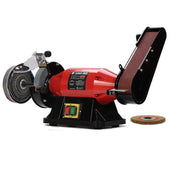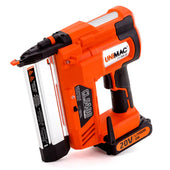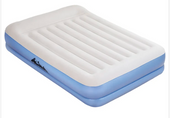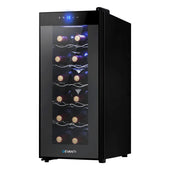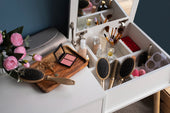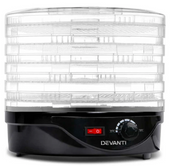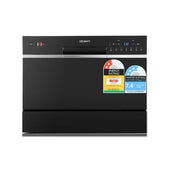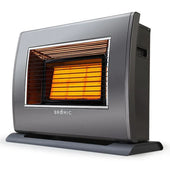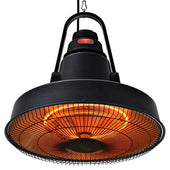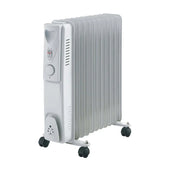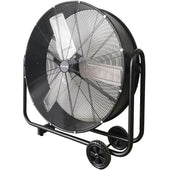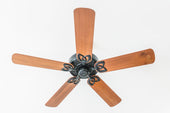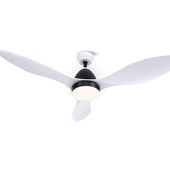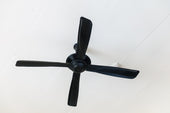Introduction: The Importance of Comfortable Kitchen & Dining Chairs
Comfortable kitchen and dining chairs play a vital role in creating an inviting and functional space for meals, conversations, and daily activities. These chairs influence posture, mood, and even the overall dining experience. Poorly designed seating can lead to discomfort, while ergonomically designed chairs provide support that enhances the quality of time spent at the table. Families and hosts often seek chairs that strike a balance between style, durability, and comfort. Factors such as material, cushioning, and height adjustment contribute to a chair’s usability. Investing in quality seating ensures long-lasting comfort, promoting enjoyable interactions and memorable moments.
Key Features to Look for in Kitchen & Dining Chairs
When selecting kitchen and dining chairs, several features play a critical role in ensuring comfort, style, and practicality. Material quality ranks high, with options like solid wood, metal, or high-grade plastics offering durability and ease of maintenance. At During Days, ergonomics should be prioritised, ensuring chairs support proper posture with well-contoured seats and backs. Adjustable seat heights, padded cushions, and lumbar support add extra comfort.
For design, versatility matters. Neutral colours and sleek designs blend seamlessly with various decor styles. Weight and portability should also be considered for easy repositioning. Lastly, chairs with non-slip feet or glides protect floors from scratches and provide stability.
Types of Materials: Wood, Metal, Upholstery, and More
Dining and kitchen chairs come in a variety of materials, each offering unique advantages.
- Wood: Known for its durability and timeless appeal, wooden chairs are perfect for rustic or traditional settings. They can feature intricate carvings or sleek finishes, depending on the design.
- Metal: Metal chairs are robust, modern, and often lighter in weight. They suit industrial and minimalistic decor styles and handle wear and tear exceptionally well.
- Upholstered: Upholstery provides superior comfort, ideal for long dinners. Options range from plush velvet to practical, stain-resistant fabrics.
- Plastic or Acrylic: Lightweight and affordable, these are great for contemporary and casual environments.
Many designs mix materials for a balanced aesthetic and functionality. Transitioning between materials creates versatility in matching diverse decor styles.
Ergonomics: How Chair Design Impacts Comfort
Ergonomics is a critical factor in determining the comfort level of kitchen and dining chairs. Features such as seat height, depth, and backrest curve play a vital role in providing adequate support. Chairs should promote proper posture; for instance, a slightly tilted backrest can reduce strain on the lower spine.
Armrests, when aligned correctly, also enhance comfort by reducing pressure on shoulders. Padded seating improves cushioning, while breathable materials prevent overheating during extended use. Additionally, adjustable components cater to users of varying heights. Well-designed chairs ensure even weight distribution, decreasing discomfort during long meals. Small ergonomic adjustments often produce significant comfort improvements.
Top Styles of Kitchen & Dining Chairs for Aesthetic Appeal
When selecting chairs, the style plays a crucial role in defining a kitchen or dining space’s atmosphere. Here are some popular styles:
- Traditional Chairs: Often made of wood, these feature ornate details like carvings or spindle backs, adding a classic touch.
- Modern Chairs: Sleek with clean lines, often crafted from moulded plastics or metal, ideal for minimalist interiors.
- Industrial Chairs: Known for their raw materials like steel and distressed wood, they suit urban or loft-style spaces.
- Farmhouse Chairs: Rustic and welcoming, these chairs feature wooden builds and neutral tones, perfect for a cosy vibe.
- Upholstered Chairs: Offering elegance and comfort, these chairs include padded seats covered in fabric or leather.
Compact vs Spacious: Choosing the Right Chair Size
Selecting the right chair size is essential for both comfort and practicality in kitchen and dining setups. Compact chairs are ideal for small spaces, as they maximise room while maintaining functionality. These chairs often have slimmer profiles, armless designs, and lightweight frames, making them easy to manoeuvre and store.
In contrast, spacious chairs cater to those prioritising comfort or working with larger areas. Features like broader seats, armrests, and padded cushions enhance the dining experience but require more room. When deciding, one should consider the table’s dimensions, available space, and the chairs’ ability to balance form and function seamlessly.
Durability and Maintenance: Chairs That Stand the Test of Time
When discussing durability, the material and construction play a pivotal role. Solid wood chairs, especially oak, maple, and walnut, are known for their robustness, resisting wear from daily use. Metal-framed chairs, particularly aluminium and steel, provide longevity while maintaining a sleek aesthetic. Upholstered chairs must feature quality fabrics like polyester or leather to withstand spills and stains effectively.
Proper maintenance extends the lifespan. Cleaning instructions vary by material; wood requires gentle cleaning solutions to avoid warping, while metal benefits from anti-rust treatments. Upholstery should be cleaned with fabric-safe products to preserve texture. Regular tightening of screws and joints prevents structural damage, ensuring long-lasting reliability.
The 25 Best Kitchen & Dining Chairs Ranked
Choosing the ideal kitchen and dining chairs requires consideration of materials, design, and comfort levels. Each chair on this list was ranked based on its ergonomic support, style, durability, and value for money. The selection combines timeless styles with modern innovation, ensuring options for every home aesthetic.
Key Features to Analyse:
- Comfort Criteria: Assess lumbar support, seat depth, and cushioning quality.
- Material: Look at wood, metal, plastic, and upholstery options for different needs.
- Design: Evaluate how the chair matches varied decor styles like rustic, mid-century, or modern.
- Durability: Prioritise build quality and weight capacity for long-term use.
Ranked Chairs:
- Upholstered dining chairs with padded seats for extra comfort.
- Solid wood options with elegant high backs.
- Sleek metal and minimalist chairs for contemporary spaces.
- Plastic moulded styles for durability and affordability.
- Folding chairs that maximise flexibility and storage space.
Each category ensures options tailored to both comfort and preferences while enhancing dining experiences.
Budget-Friendly Options Without Compromising Comfort
Finding kitchen and dining chairs that balance affordability and comfort is achievable with careful consideration. Several options are available that pair durability with ergonomic designs, ensuring value without sacrificing quality.
- Mid-Century Modern Styles: Chairs featuring moulded plastic seats and wood legs offer timeless aesthetics and support at a low cost.
- Upholstered Choices: Chairs with padded seats in durable fabrics provide softness and long-lasting support.
- Stackable Designs: Space-saving stackable chairs, often crafted from metal or polycarbonate, ensure both convenience and comfort.
- DIY Options: Simple wooden chairs can be upgraded with custom cushions, allowing for personalisation and cost control.
Opting for these economical alternatives ensures practicality and coziness remain priorities.
Luxury Picks for Maximum Comfort and Elegance
When it comes to elevating both comfort and sophistication in kitchen and dining spaces, luxury chairs stand out as a premium choice. These designs often feature high-quality materials, exceptional craftsmanship, and attention to detail that make them worth the investment. With features such as ergonomic shapes and padded seating, these chairs combine style with unbeatable functionality.
Features That Define Luxury Dining Chairs
- High-quality materials: Leather, velvet, solid wood, or metal accents.
- Customisation options: Adjustable features or tailored upholstery.
- Elegant design: Timeless shapes paired with modern touches.
- Durability: Built from robust materials for years of reliable use.
Luxury chairs often strike a balance between artful aesthetics and practical performance, ensuring a pleasant dining experience and visual harmony with upscale interiors.
Matching Chairs to Your Dining Table Setup
Selecting chairs to complement a dining table requires attention to style, proportion, and functionality. Begin by considering the table’s design—whether it’s contemporary, rustic, or traditional. Chairs should share similar elements, such as material or colour tones, for a cohesive look. Proportions matter; ensure chair height and width match the table’s dimensions, leaving ample leg space.
If the table is round, opt for chairs with curved or armless designs for easy movement. For rectangular tables, upholstered or high-back chairs often create balance. Mixing styles, like wood chairs with metal tables, adds contrast while maintaining harmony through a unifying factor, such as fabric or finish.
Popular Brands Known for Quality Kitchen & Dining Chairs
Several brands stand out for their craftsmanship and design in kitchen and dining chairs.
- IKEA: Renowned for affordability and Scandinavian designs, offering chairs suitable for modern and minimalist spaces.
- Ashley Furniture: Combines durability with stylish aesthetics, catering to various decor styles.
- Herman Miller: Premium choice for ergonomic designs and exceptional comfort.
- West Elm: Specialises in mid-century modern and contemporary chairs with sustainable materials.
- Pottery Barn: Known for timeless designs and robust construction, often geared towards classic interiors.
- Wayfair: Offers a wide selection of chairs across price ranges, fitting diverse style preferences.
- Chintaly Imports: Focuses on high-end and trendy options designed for chic dining areas.
Versatile Designs for Multi-Functional Dining Areas
Today’s dining areas often serve more than one purpose, combining eating spaces with homework desks, home offices, or casual meeting zones. Selecting chairs designed for versatility ensures comfort and functionality. Look for the following features:
- Stackable or foldable designs: These provide flexibility for compact spaces, allowing easy storage when not in use.
- Ergonomic seating: Chairs with contoured designs enhance comfort for both short meals and extended activities.
- Neutral tones and adaptable styles: Minimalist aesthetics blend seamlessly with multifunctional layouts, complementing various decors.
- Durable materials: Wooden or metal frames are ideal for frequent use and remain stylish across diverse roles.
Ensuring adaptability caters to evolving household needs without sacrificing style or usability.
Sustainable and Eco-Friendly Choices for Conscious Consumers
Conscious consumers seeking eco-friendly options in kitchen and dining chairs will find several noteworthy choices. Many brands now prioritise sustainable materials like reclaimed wood, bamboo, and recycled metal, ensuring reduced environmental impact. Upholstery crafted from organic fabrics or vegan leather further promotes greener living.
Furniture with certifications like FSC (Forest Stewardship Council) underscores ethical sourcing of wood. Chairs featuring non-toxic finishes and low-VOC paints align with healthier indoor spaces. Innovatively designed modular chairs support reusability by allowing easy repairs or upgrades, extending their lifespan.
Consumers can explore artisans and manufacturers combining form and function with sustainability, blending comfort with eco-conscious values naturally.
Customising Your Dining Space: Mixing and Matching Chairs
Creating a personalised dining space involves selecting chairs that complement each other while expressing individuality. Mixing and matching allows homeowners to infuse character into their rooms and break away from conventional, uniform sets.
Practical Tips for Mixing and Matching
- Focus on Colour Harmony: Combine chairs with matching tones or cohesive colour palettes to maintain aesthetic balance.
- Experiment with Materials: Pair wooden chairs with metal or upholstered options for added texture and style variety.
- Blend Styles: Mix vintage, industrial, or modern chairs for an eclectic yet unified look.
Proportion and Placement
Ensure chair heights and proportions align; consistency enhances comfort during meals and ensures the visual composition looks polished.
Buying Online vs In-Store: What You Need to Know
When selecting kitchen and dining chairs, both online and in-store options present unique benefits and challenges. Shopping online provides access to a wider array of styles and designs from global brands. Detailed product descriptions and customer reviews help in evaluating comfort and durability. However, buyers cannot physically test chairs or inspect material quality firsthand.
Purchasing in-store offers a tactile shopping experience where users can sit, feel textures, and check build quality directly. Sales staff often provide personalised advice, but choices can be limited to available models.
When buying, consider delivery costs for online purchases and transport logistics when buying in-store.
Customer Reviews and Ratings: Insights Into User Comfort
Customer reviews and ratings offer valuable insights into the practicality and comfort of kitchen and dining chairs. Buyers frequently highlight materials, cushioning, and back support as crucial factors affecting seating comfort.
- Positive Feedback: Many users praise chairs with ergonomic designs, padded seats, and durable upholstery for prolonged comfort over extended meals or gatherings.
- Negative Feedback: Common complaints include stiff cushioning, insufficient legroom, and unstable frames that hinder daily use.
Recurring themes in reviews often reveal preferences for chairs with adjustable features and ones that blend style with functionality, making comfort a priority for diverse users.
Tips for Testing Comfort Before Purchase
- Sit for an Extended Period: When trying out a chair, remain seated for at least 5–10 minutes to evaluate if it remains supportive and comfortable over time.
- Pay Attention to Height: Ensure the chair’s height aligns with your table or countertop to ensure proper posture while dining.
- Test Cushion Density: Press into the cushion. A balance between softness and firmness offers better comfort and durability.
- Assess Backrest Support: Look for a backrest that encourages good posture with natural lumbar support.
- Move and Adjust: Check for ease of movement or adjustability if the chair swivels, rocks, or has other features.
- Evaluate Upholstery Feel: Take note of the fabric texture and temperature—it shouldn’t irritate skin or feel excessively warm.
Maintenance Tips to Preserve Comfort and Longevity
Proper care ensures that kitchen and dining chairs retain their comfort and durability for years to come. Here are key maintenance tips:
- Clean Regularly: Wipe down chairs with a soft cloth to remove dust and spills. Use a damp cloth and mild cleaner for stubborn stains, ensuring no harsh chemicals are used.
- Check Joints: Inspect screws, bolts, and other fastening elements periodically to keep the chair stable and secure. Tighten loose fittings promptly.
- Protect from Excess Wear: Add felt pads under legs to prevent scuffs to floors and preserve chair integrity. Rotate chairs if placed unevenly to balance wear.
- Limit Sun Exposure: Keep chairs away from direct sunlight to prevent fading or warping, especially for wooden or fabric upholstery.
- Condition Materials: Apply wood polish or leather conditioner annually to maintain sheen and flexibility, enhancing durability.
Taking these measures ensures chairs stay inviting and reliable.
Final Thoughts: The Best Chairs for Your Needs and Style
Selecting the right kitchen or dining chair requires balancing comfort, aesthetics, and functionality. Shoppers should consider key factors such as ergonomics, materials, and design. Wooden chairs provide timeless appeal, combining durability with traditional charm, while upholstered options enhance comfort for longer seating periods. For those who prioritise modernity, metal and mixed-material designs offer sleek elegance and easy maintenance.
- Small spaces benefit from stackable or lightweight chairs.
- Large gatherings require sturdy, supportive designs.
- Rustic styles pair well with distressed finishes.
Additionally, personal preferences for cushioning, backrest height, and arm support significantly shape the final decision, ensuring the chair aligns seamlessly with both décor and daily usage.


